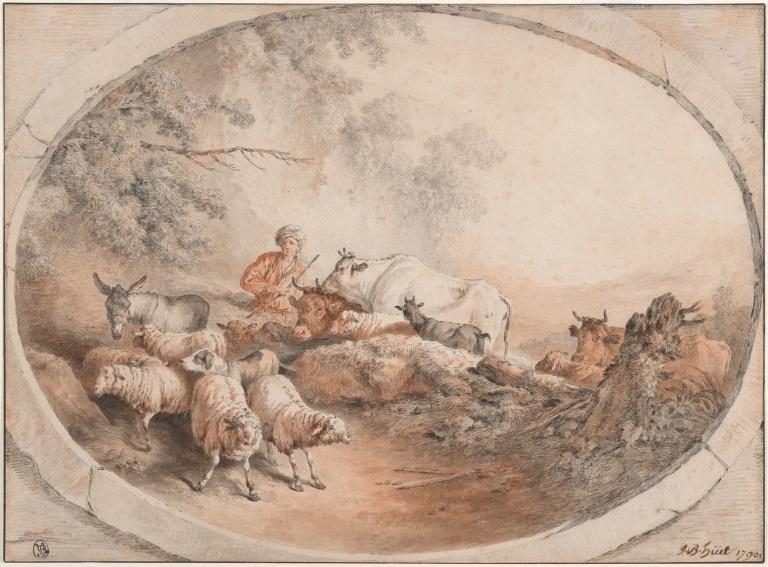Drawn to Beauty: Fifteen Years of Acquisitions for the Crocker Art Museum

The Crocker Art Museum is pleased to announce the exhibition Drawn to Beauty: Fifteen Years of Acquisitions for the Crocker Art Museum, on view from October 22, 2023 through April 28, 2024. With over 45 European master drawings from the 16th through the mid-20th centuries, the exhibition provides insight into a variety of artistic periods and cultures. French portraits from the court of Louis XIII, Italian views of 18th-century Venice, German mythological scenes, and Dutch river landscapes are among the many types of drawings represented. Some of the most famous names in European art appear in the exhibition, for example Jean-Antoine Watteau, Francesco Guardi, Paul Signac, Egon Schiele, and Henry Moore, and most of the drawings are seen in public for the first time.
The exhibition is not only a celebration of art and its acquisition. It is also a celebration of the many and generous donors who, by gifts of objects or funds, have demonstrated their commitment to the Crocker Art Museum and its renowned collection of European master drawings. Recognizing the unique history and importance of the original E. B. Crocker drawings donation, in Sacramento since 1871, these patrons have allowed the Museum to extend the collection’s scope and depth, following the founders’ lead in their generous support for European art.
“Through the generosity of our patrons, we are able to present a wealth of artistic treasures to the public, and we continue to build the European drawings collection in ways we could only have dreamed of before,” said Lial A. Jones, Mort and Marcy Friedman Director & CEO.
In the course of acquiring the drawings in the show, many of the Museum’s ambitions for the collection have been fulfilled. For example, though the collection of French drawings included a strong core of 17th-century subjects and a group from the mid-18th century, there was little to connect them. A striking drawing of a Young Man Looking Down by Jean-Antoine Watteau now allows the Crocker to tell a more complete story. Representing Watteau’s crucial artistic innovations, its subject is a figure in a fête galante, an amorous couple in a woodland setting, now in the J. Paul Getty Museum. In addition to this novel type of subject, which Watteau invented, the drawing also represents his use of trois crayons—black, red, and white chalks used together—which he introduced to French art.
Other objects extend the collection in different ways. Extremely strong in German 18th- and
early 19th-century art, the original Crocker collection includes few watercolors of any kind. A charming scene of a farmstead by Christian Gottlob Hammer strengthens this area and shows a unique use of the watercolor medium. With its scene of villagers preparing their goods and leaving for market, it is an early view of the Rabenauer Grund, an isolated district southwest of Dresden only recently opened to tourism in Hammer’s time. It is also a vivid illustration of the unique German watercolor practice, with its meticulous brushwork and subtle color transitions, so different from other traditions.
Building the Crocker drawings collection is a story of relationships—between art and artists, between the Museum and the market, and between patrons and the collection itself. Many of the stories are fascinating, and some include great coincidences. A drawing, Le Soir, by Jean-Baptiste Hüet, appeared on the art market in Paris in 2016. Under consideration by the Museum to join a very different drawing by the same artist already in Sacamento, Le Soir was discovered to have been in California before. Exhibited in San Francisco in 1935, it once belonged to William H. Crocker, the nephew of the Museum’s founder, and is now back home in northern California.
It is these fascinating stories—stories of art, of techniques, of cultures, of people—that the Crocker Art Museum shares through the over 45 European drawings in Drawn to Beauty. From a 1637 Man playing a Sackbut by Cornelis Saftleven to a scene of tumbling Divers drawn in 1940 by Fernand Léger, there is something for everyone in this show.